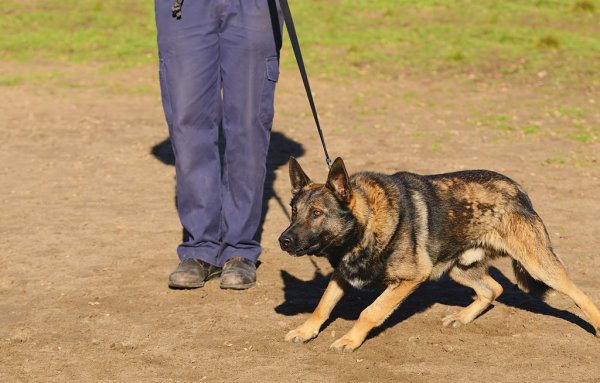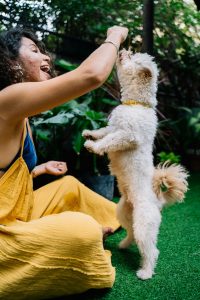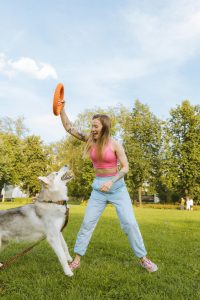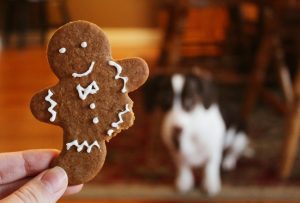Does your dog listen to you only at home? Or during a training class? Does he ignore your commands when you are out in the open? No, your dog is not stubborn. But there is a problem you have to address. And that is distractions.
Getting your dog to come when called or to sit is easy when you are at home. But when you are outside, there are noises, other people, other dogs, animals, and what more.
The “outside” is a world full of distractions. Remember, distractions are part of your dog’s life and training. Sadly, they can cause problems when your dog is not focused on you. He is focused on the distraction and ignores you.
What can you do? Well, today we will talk about how to avoid distractions and how to make them less likely to hamper the training.
Distractions can vary from one dog to another
Not all dogs have the same distractions. They can vary. For example, some dogs might be unfazed by a squirrel or a cat. Others might go nuts.
Some dogs will look away even when a butterfly flies past. Some dogs are distracted by people. For some puppies, the family is a distraction.
Generally speaking, distractions are not equal. They can be low, high, and over the top. Here is how to distinguish them from one another.
- Low-level distraction is something that gets your dog’s attention but you can get him focused on you again without too much trouble. For example, during a training class or in the dog park, another owner taking out treats
- Higher-level distraction is something that gets too much of your dog’s attention and you have to work harder to get his attention. In this case, your dog might stare at the distraction and ignore your request and treats for luring. Here is an example, people having lunch at the park and your dog drooling over their food
- Over the top distractions are those that throw your dog into a frenzy. For example, my Jack Russell goes nuts for cats, squirrels, and similar animals. But he is a hunting dog breed after all. His instincts are telling him to go and hunt that animal. In this case, the best thing to do is turn the distraction into a command and training opportunity
Last, but not least, dogs can also get overstimulated by food, kids playing, other dogs, other animals, vehicles, and so on.
Understanding your dog’s distractions
The best way to handle a distraction is to know about it beforehand. That is the only way to change behavior. For example, you can make sniffing or chasing a squirrel a reward.
The trick is to understand what sets your dog. For example, for hound dog breeds sniffing is a bigger reward than treats and toys. Their natural instinct is to sniff. The moment you understand that you can turn any problem into a reward and solution.
Does your dog want to sniff his favorite spot? Well, make that his reward for good behavior. Understanding what distracts your dog aids the training process.
How to solve distractions?
The training method you can use to handle distractions in your dog’s life is called proofing. It is just solid training. Basically, it means teaching your dog to respond to your cues when there are other interesting, exciting, scary, or fun things happening around him. Or in other words, listen to you when there are distractions.
The secret to proofing is making yourself more interesting to your dog than anything else around. If you are wonderful and fun, the training game is fun and wonderful. Why would your dog look for something else? Think about it this way. If you please your partner, and he/she is happy with everything you do for them, would they cheat on you? Probably not, right?
The concept is the same. Your dog should have as much fun with you as he could possibly imagine.
Now, the question is, how to make yourself fun and entertaining? Well, one thing you should start is hand feed your dog. This way, your dog learns that food comes from you and he has to be close to you to satisfy his natural instinct for survival (food = survival).
Now, the second part is a bit trickier. You have to make yourself variable and unpredictable. Dogs learn patterns and behavior. If your dog learns that every time he comes to you he gets a treat, he will stop coming when you call. He will come when he wants to on his own terms.
If your dog doesn’t know what to expect from you, he will stay close to you. He is eager to find out. Think of it this way, your dog is in eager anticipation.
And you can easily achieve that. Simply pull out a tug toy, a ball, or a squeaky toy out of your pocket without your dog expecting it. Do this randomly during walks. Another way to proof your dog is to reward only above-average behavior. In simple terms, reward and praise only when your dog comes back lighting fast on recall. Do not reward slouch recall.
Step by step proofing method
To accomplish proofing your dog, you have to start in a new environment. Grab lots of rewards (high rate of reinforcement) and a wide variety of high-value treats (good stuff reinforcement).
Start with easy behaviors. Put your puppy in a position to win and succeed. For example, simple stay, sit, lie down, give paw, and so on.
Now, when you notice a possible distraction, randomly surprise your dog with an exciting reinforcement. He doesn’t anticipate this, so you can get a tug toy out or a hidden rope toy. Engage your dog and play with him.
Then, release him from playtime, and hide some treats on the ground and play “find it”. You can also toss a ball for your dog to catch.
The trick here is to make your dog focused on you during a distraction. If you are not sure you can notice them easily, simply arrange for distractions. Does your dog get distracted when people pass by? Well, arrange for friends to come during your play and training session.
As you build up his confidence and focus on you, increase the distraction level. Start with short training sessions and low distractions. Then, build up to longer training sessions and higher-level distractions.
Remember, the key point is to set your dog up for success. If your training seems too easy, you are at the sweet spot.
And most importantly, every time your dog ignores you in favor of a distraction, he practices ignoring you. If you desperately try to call him at this point, you are reinforcing his ignorance. Instead, ignore your pup as well. You do not want to build up his habit of ignoring you and getting a reward afterward.







